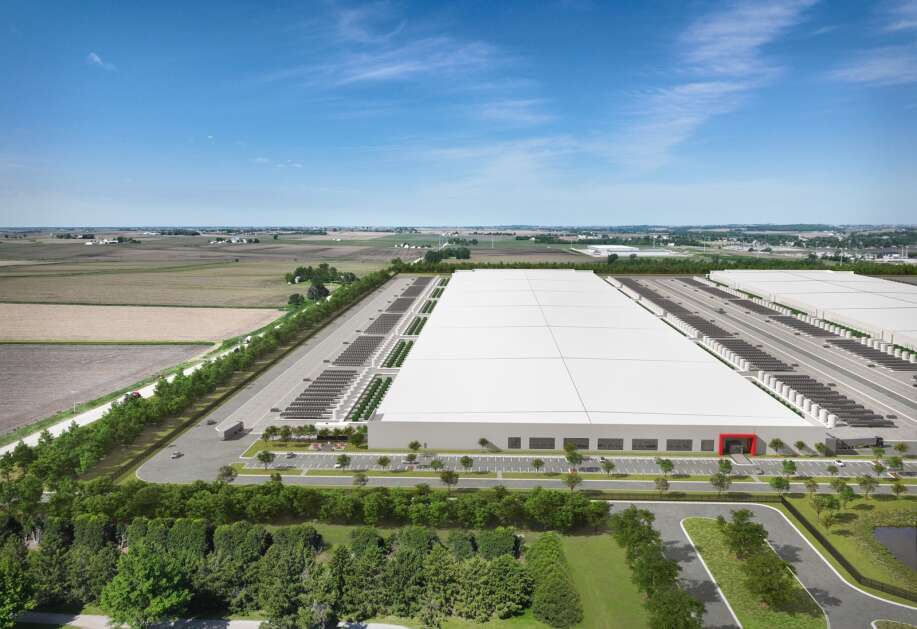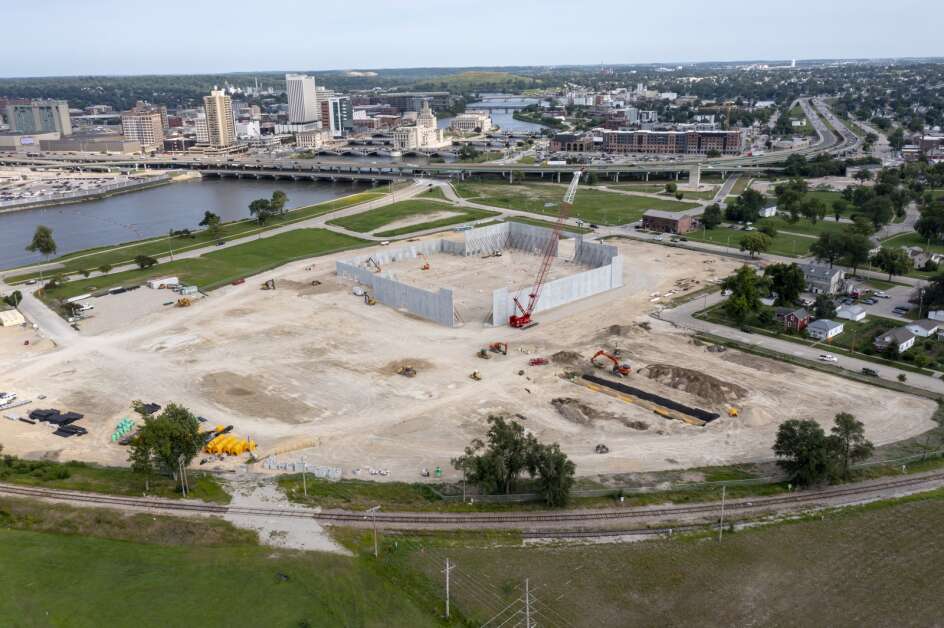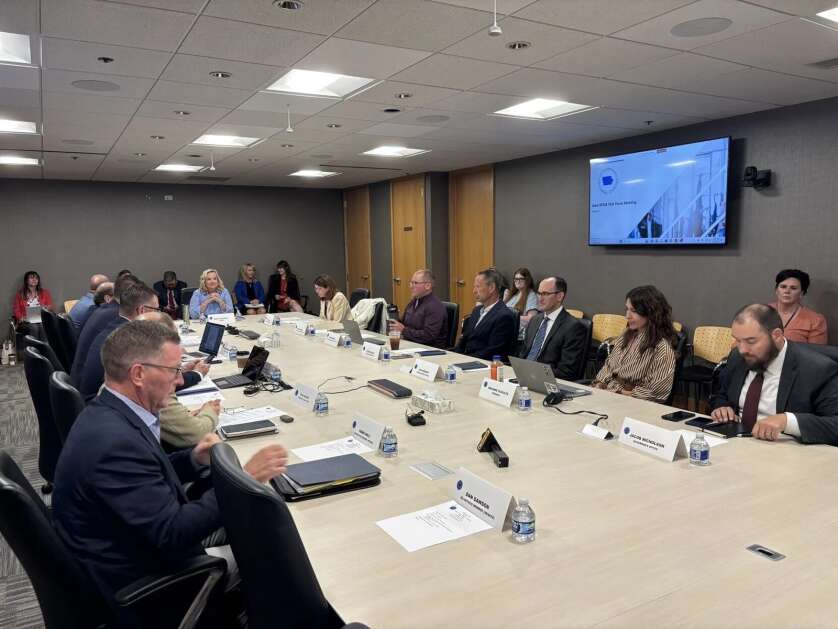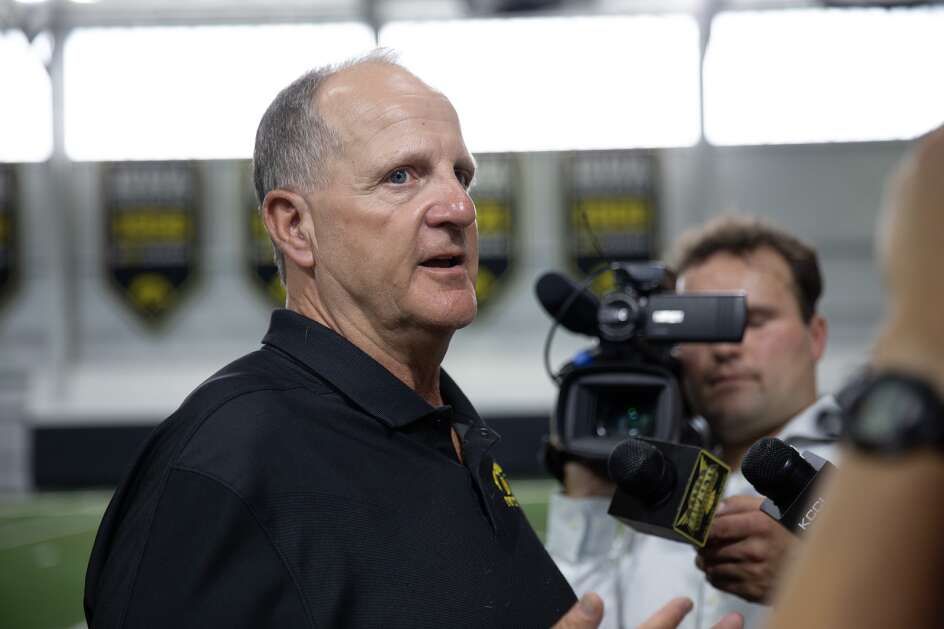The Gazette uses Instaread to provide audio versions of its articles. Some words might not be spoken correctly.
It is almost hard to overlook the amount of change that has occurred in the Big Cedar Industrial Park, which is the site of Cedar Rapids’ two data center projects, in a few of months.
Large earthmoving machinery and cranes are positioned throughout the locations, and excavation has proceeded quickly over hundreds of acres. On adjacent parcels just off Edgewood Road, the two biggest projects in the city’s history are being built.
The QTS project is expected to cost more than $750 million, while the Google project is estimated to cost $576 million. Although the employment drive for the sites is still in its early phases, the projects are anticipated to result in a notable increase in construction jobs.
Along with Gov. Kim Reynolds and other officials, QTS senior leadership will be in Cedar Rapids on Tuesday to commemorate the beginning of work on the QTS facility.
Two significant data center projects mark the beginning of a new economic sector for Cedar Rapids, a city well-known for its avionics, GPS, food and agricultural sectors, and other engineering fields.
What is the function of a data center?
Computer servers, data storage, and other devices that store and retrieve data for end users are all housed in a data center.
Increases in cloud-hosted data and artificial intelligence are driving a surge in data center projects across the country.
The Cedar Rapids building will support Google’s operations, according to company executives at the groundbreaking event.
It’s about promoting scientific discoveries. It’s about strengthening cybersecurity and, more crucially, about giving Americans and people around the state new professional prospects and jobs. Ruth Porat, Alphabet and Google’s president and chief investment officer, stated this during a news conference in southwest Cedar Rapids in late May.
The QTS facility will be a little different because another company or companies will be using or leasing its center. QTS, which has over 75 data centers across Europe and the US, has not commented on who will use its Cedar Rapids site.
How will the facilities at the data center look?
According to Google officials at the groundbreaking in May, the corporation plans to erect at least four major structures on its property. It is anticipated that the current phase of building will be finished in 2026. Although Google, the utility, and the state geologist have all stated that there is a sufficient supply of water, the Google data center in Cedar Rapids is anticipated to be one of the city’s biggest water users.
Seven one-story buildings, ranging in size from roughly 400,000 to 1.1 million square feet, will be part of the 600-acre QTS Cedar Rapids data center site, according to QTS executives. According to them, the buildings’ precise characteristics could vary. The project will be built in two stages, the first of which will be finished in 2026 and the second in around a year.
However, the company implemented a closed loop design employing refrigerant in 2018, which is expected to result in a significant reduction in water consumption at the QTS facility.
In an interview with The Gazette, QTS co-CEO David Robey stated, “We think water is a commodity and a resource that needs to be taken care of.” In addition to having an effect on our communities and society as a whole, water evaporation and usage also strain water treatment facilities and all the other infrastructure needed to support those, you know, from a data center. Therefore, we think that using water from a heat rejection source as an evaporative source is wrong.
Why are developments currently taking place in C.R.?
CBRE Group Inc., a Dallas-based commercial real estate services and investment firm, claims that the rapid advancement of artificial intelligence and the strong demand for cloud services have caused a boom in data center building across North America.
Iowa’s economical, plentiful, and environmentally friendly wind energy, stable grid, high-speed fiber-optic connections, low construction costs, and tax advantages have all attracted tech businesses, with Microsoft, Meta, and Apple joining Google in constructing data centers there. While this is QTS’s first Iowa development, Google started investing in the state in 2007 in Council Bluffs.
These initiatives took distinct paths as they developed. Over the course of more than five years, the Google project evolved, with some of the initial meetings taking place in staff members’ homes to avoid identifying site selectors. The QTS project was later and came to fruition within a few months.
Alliant Energy’s manager of data center services, Josh McKnight, stated that in an effort to secure projects for the location, they have prepared many RFIs for the state and local economic development organizations.
According to McKnight, people were drawn to this area by the recent surge in data center operations and artificial intelligence. When you consider the site certification we completed with the city of Cedar Rapids in the state of Iowa, the ideal combination of power infrastructure from our transmission partners at ITC Midwest, and some of the other proactive economic development initiatives we carried out, it created the ideal environment for the data centers to target us and truly come to us rather than us reaching out.
Despite the fact that Cedar Rapids has never had a data center, QTS stated that there has been a solid alignment between Alliant, Cedar Rapids officials, and the company, which contributes to the project’s success for all parties. He mentioned other workforce-focused supports.
I firmly believe that our parties’ collaboration will be more effective the more you can communicate and make plans for the future. In the end, Robey stated, “this is a long-term partnership that all parties, you know, thrive and benefit from.” Only when the value propositions of the many parties engaged intersect can we all benefit.
In Wisconsin, Alliant Energy and QTS are working together on a related data center project. In Wisconsin, around 15 miles north of Madison, which is also inside the Alliant service territory, up to 15 buildings could be constructed.
Earlier this month, QTS co-CEO Tag Greason told Wisconsin Public Radio, “We were informed of their ability to deliver power in Wisconsin.” Then we said, “All right, let’s start looking at opportunities that would meet the workforce and land requirements.” We were also able to locate a piece of land in Vienna.
For what reason are these facilities being constructed adjacent to one another?
Data center projects are frequently co-located.
According to Robey, you’ll frequently notice data centers colocating. But you are aware that the data centers will function quite independently. The two of them do not necessarily engage with one another.
According to him, other expenses, such as those for fiber, can be split, and the utilities required to support these projects are substantial.
According to Robey, the ecosystem surrounding those data centers can begin to expand the supporting businesses, and the economic impact should not be disregarded. If there is a buildup of facilities, it makes it possible for those resource teams to expand and become more effective, and I believe that using that has a really beneficial effect on the community.
More than 1,000 construction jobs will be created, according to Google.
How do data centers adjust as technology advances?
Businesses frequently alter the equipment within a data center, even if the building’s façade may not change.
Since construction of its Council Bluffs data center began in 2007, Google has operated in Iowa. The business announced plans to extend its cloud and AI infrastructure at the Council Bluffs site during its groundbreaking ceremony in Cedar Rapids in May.
At QTS, Robey said while the outside may not change much during the building s 30- to 50-year life span, the inside of the building is built to be flexible to future technological changes.
These facilities are built with every thought in mind around how do I make sure I prepare for the next wave of chip sets or the next technology solution that becomes available, Robey said. You’re looking at a lot of refreshes because you’re looking at modifications every five years.
According to Robey, the internal retrofits will also necessitate hiring more staff to help with the adjustments.






